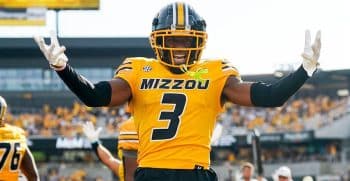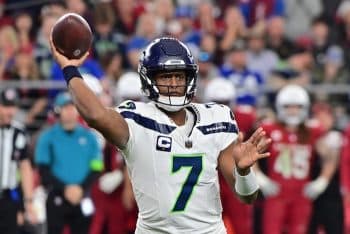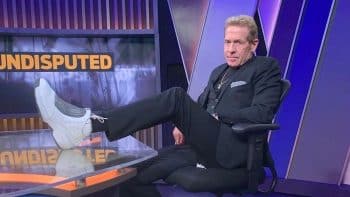MLB
Whatever Happened to Gregg Jefferies, the Hyped-Up New York Mets Phenom?

Before it was known the baseball card craze would take a hit in the late 1980s due to severe overproduction, collectors were actively seeking that 1988 Donruss Gregg Jefferies card. It was a rookie card of the highly-touted player of the New York Mets who came into Major League Baseball with as much hype as any player back then. Although Jefferies lasted 14 years in the big leagues and put up some good numbers, he didn’t quite live up to expectations.
Gregg Jefferies had a very solid MLB career
RELATED: Whatever Happened to Former Cleveland Indians Slugger Albert Belle?
Imagine making your Major League Baseball debut as a 20-year-old, hyped-up rookie in New York? The bar was set so high for infielder Gregg Jefferies that most big-leaguers would kill to have the type of career he had, yet he is a guy who is remembered for not having met expectations. Jefferies played 14 seasons in the big leagues with six different teams.
Jefferies played the first five years of his career with the New York Mets. After the 1991 season, Jefferies was sent to the Kansas City Royals in a deal involving pitcher Bret Saberhagen. He spent one year with the Royals, finishing with a .285 batting average in 152 games. In February of 1993, Jefferies was traded to the St. Louis Cardinals.
In his first year with the Cardinals, he hit a career-high .342 in 142 games. Jefferies made the first of his two MLB All-Star Games during that 1993 season. He followed that up with another All-Star appearance during the strike-shortened 1994 season when he hit .325 in 103 games. For his career, Jefferies had a .289 batting average and collected 1,593 hits. He finished his career playing for the Philadelphia Phillies, Anaheim Angels, and Detroit Tigers.
Jefferies had trouble fitting in with the Mets
The New York Mets of the late 1980s were a tough bunch. It was a group of veterans one year removed from a World Series when rookie Gregg Jefferies made his debut during the 1987 season with six plate appearances. “It was the roughest group to break in with, the Mets of that era — tough as they come,” veteran pitcher David Cone said to the New York Post in May. “We self-policed and we ran rookies hard. It was a different generation of players. … The veterans were hard on (Jefferies). Once you were on the wrong side with that group it was impossible to recover.”
Wally Backman, a second baseman who was popular with his Mets teammates and the fans, was traded to make room for Jefferies, the hot-shot rookie. Jefferies, according to some players, had an attitude and struggled to fit in with the players. “He was just difficult to reach,” said veteran Keith Hernandez. “He gave off a vibe that the world revolved around him. The way he comported himself. He was having a hard time fitting in. I don’t know if that was our ballclub or his life.”
Jefferies, 52, looks back on his time with the Mets and realizes he was more at fault than his teammates. “I felt I did more wrong than them,” he told the New York Post. “There is no ill will. It is not their job to coddle me. They had enough on their plate. You don’t think Keith Hernandez and (Darryl) Strawberry and Gary (Carter) had pressure? They were the face of New York. They had their own issues. I needed to take care of me. I had to learn as I was playing.”
Why did Gregg Jefferies succeed in St. Louis?
In his only two seasons with the St. Louis Cardinals, Gregg Jefferies was an MLB All-Star. The reason may be a simple one. He switched positions and moved to first base. “The position change was huge for me,” said Jefferies to the St. Louis Post-Dispatch. “I know it sounds strange. Why would a position change on defense help me offensively? But, just moving to first base, I didn’t have to worry about anything.
“I had the greatest shortstop of all-time (Ozzie Smith) throwing me the ball from short. I had very accurate players around the infield. All I had to work on was my hitting. Ground balls were always pretty natural to me. My biggest thing was throwing. I had a strong arm but I didn’t know where the ball was going. When I was over at third base, I’d be driving to the stadium worried about how many right-handed hitters there were in the other lineup.”
These days, Jefferies is living in Nevada and remains somewhat attached to the game as a freelance hitting instructor. He said he doesn’t ever sit down and watch a game on television. “I don’t think I can sit down and watch a full game,” he said. “I don’t know the last time I sat down and watched a full game.”











